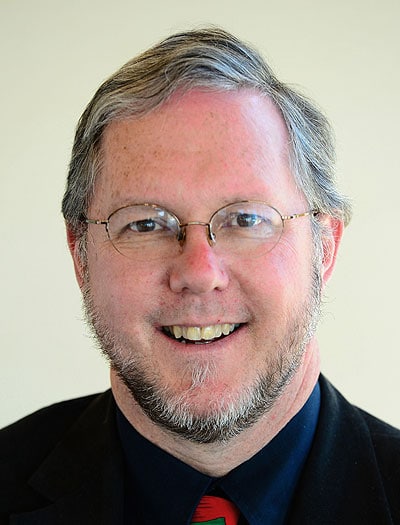Michael Glenn’s career in trauma has taken him all over the world. He started out as a paramedic in his hometown of Columbus, Ohio. Since then, he has managed trauma programs, set up trauma data systems, trained trauma nurses and taught trauma PI on five continents.
Mike is currently the manager for trauma surgical quality improvement at Harborview Medical Center in Seattle. I recently interviewed Mike about his career in trauma PI and his top lessons learned (edited transcript below). He talked about the need to stay focused on core goals while gaining broad exposure to different perspectives.
“Right out of high school, I was really interested in getting involved in search and rescue with the Coast Guard…”

However, my eyesight was too bad for the Coast Guard, so I wasn’t eligible. But not long before that, a local community college in Columbus started an associate degree program in EMS. I thought, ‘Well, if I can’t get into the Coast Guard, this sounds like a good second choice.’ The next thing you know I was enrolled in the EMS program and I became a paramedic.
At that point, I was really interested in injury care. I really liked the unpredictability of trauma — the sudden change in status from someone who is pretty healthy to all the sudden somebody who’s really, really sick. The rapid turnover and the quick decision making that had to happen appealed to me.
“After four or five years, I realized I wanted to do more and I wanted to advance…”
I had several close friends who were ER nurses at the local hospital. I knew I wanted to work with trauma, and the ER seemed like a really good transition to providing a more advanced level of care for injured patients. So I just kind of gravitated toward nursing.
I worked in the ER at a hospital in Mansfield, Ohio, for a couple years. Then I moved back to Columbus and took a job at a Level II trauma center. I eventually became the trauma program manager there, and I did that for almost 10 years. Later on, when Ohio passed its trauma system legislation, I took a position as the state trauma system manager.
In 2007 I took a job with the U.S. Army as head of the trauma informatics program at Landstuhl Regional Medical Center in Germany. A colleague of mine was the trauma program manager there, and she recruited me to help with the registry and the quality improvement piece.
“It was the height of the Gulf War…”
…and they were advancing Landstuhl to become a verified trauma center. It was going to be the first verified center outside the U.S., so they needed to have a high-functioning registry and quality improvement system.
The medical data systems for the U.S. military health system were quite antiquated and didn’t really talk to each other. The new registry was the only way to piece together what was happening to injured soldiers in the theater and in facilities from Afghanistan or Iraq to Germany to the States.
While I was at Landstuhl, I had the pleasure of meeting Dr. Gregory Jurkovich when he came to Germany as a visiting professor. He was looking for somebody to work on quality improvement for his program, and I was getting ready to come back to the States. So, long story short, I landed here in Seattle at Harborview Medical Center, and I have been here 10 years now.
“One of the biggest challenges in trauma PI is trying to stay focused…”
It’s easy to bite off more than you can chew, especially at a busy program like Harborview. Staying true to what you’ve decided is going to be your focus is not as easy to do as it is to say. The tendency is to want to chase every little quality issue that pops up, but you have to stay focused on the core quality issues that will get you the most bang for the buck.
When you get your annual TQIP report, there is so much data in there that you could go down a dozen different rabbit holes if you really wanted to. But you have to decide where you want to invest your energy. If your focus is really diluted, you will have only a superficial engagement with a lot of different issues. At Harborview, we’re choosing to go deeper on fewer issues so we can make a bigger difference on those particular aspects of care.
We tend to pick two or three aspects of care within a time frame, usually within a year, and focus on those — not to the exclusion of everything else, but to stay focused on the core issues that we have identified as things we really want to be getting better at.
“Early on in my QI career, I didn’t have a good system or process for staying organized…”
It’s crucial to have a really organized process for knowing where you are with your QI issues and with the activities that lead up to verification and/or designation
Those kinds of organizational skills don’t just come naturally. You have to really build these skills and go out of your way to develop them. I didn’t do that early on in my career, but I’m much better at it now. I would certainly say it is something you need to do if you want to be successful in QI.
I try to maintain everything as an electronic file so I don’t have to shuffle around a lot of papers. How you do it depends on your registry software, but I’ve been paperless for a while now and it’s worked well for me.
It’s been a big benefit to be able to access files no matter where I am — especially in these last nine months, when I’ve been working from home. Being able to access all that information without having to dig through a file of papers in my office has been a huge benefit. I would encourage folks to explore and exploit any avenues they can to develop a paperless process. It’s just going to benefit you in the long run.
“To make quality improvement work well, you need clinical champions to run interference for you…”
You need champions for the QI program as a whole, but also individual champions when you’re trying to implement specific action plans. Most of my unsuccessful QI activities have revolved around not having a highly visible quality champion who is very clinically oriented.
Anyone who wants to advance their QI program has to look for and recruit those champions because it’s nearly impossible to get things done — especially in a busy trauma center — without buy-in at the clinical leadership level. Having a champion who sees QI the same way you do is just invaluable.
It’s not only physicians but clinical leaders in ancillary departments as well. I have a great champion in the blood bank who helps with massive transfusion protocol monitoring and interventions. I also have really strong contacts in emergency nursing who help with documentation concerns and in the respiratory department who have helped with a lot of our airway issues.
“One of my biggest failures was getting too comfortable early on…”
You need to always keep pushing yourself forward and making changes and looking for more opportunities. It’s easy to get kind of complacent and say, ‘Well, we did this and it worked and we’re just going to coast for a year.’ I think that’s a dangerous attitude to take in quality improvement. That did happen to me on a couple of occasions early in my career, and I would absolutely not do that again.
“One thing I’m very proud of is my international involvement…”
I’ve worked with the Society of Trauma Nurses for a long time, and I have had the pleasure to be their international director for the Advanced Trauma Care for Nurses (ATCN) course. That has given me the opportunity to work with nurses from all over the world and gain exposure to trauma programs that I otherwise would never know anything about. I’m also an international faculty member for the Trauma Outcomes and Performance Improvement Course (TOPIC), so I’ve had the chance to teach that program in several venues outside the U.S.
Everything that I’ve done with those two programs internationally has given me just a huge amount of professional satisfaction. I just can’t say enough about the experience of working with colleagues from totally different cultures and totally different healthcare systems and finding the common ground.
It has really opened my eyes to a lot of different ways of doing things and thinking about things. It’s easy to get kind of stuck in ‘This is the way we do it here’ or ‘This is how the ACS does it.’ But once you leave the U.S., you realize there are quite a few different options to address issues that we all face.
Personally, I’ve done programs in Spain, Portugal, Germany, Italy, several countries in Eastern Europe, Brazil, Chile, Egypt, India, Thailand and South Korea. These courses are something I look forward to, but of course the pandemic has made it difficult this year. We were on the brink of setting up a program in Ghana when COVID hit. Hopefully, next year we will have the chance to get the program established there and in other parts of Africa.
“I encourage trauma professionals to get as much experience in as many different aspects of trauma care as they can…”
I feel quite lucky in that I have had the chance to work in the prehospital setting, in the ER setting, in administrative roles in both big trauma centers and little hospitals, and in state trauma systems. Each one of those settings carries its own kind of ‘tunnel vision’ about what’s important, so it is vital to gain an appreciation for all of those perspectives.
I would really encourage folks to try to get exposure to as many aspects of the entire trauma continuum as you can. It just makes you more well rounded and gives you more empathy for what happens before the patient gets to you — or what’s going to happen to the patient after they leave you.
There are just so many moving parts. The more experience you have with those parts, the better trauma provider you will end up being.

